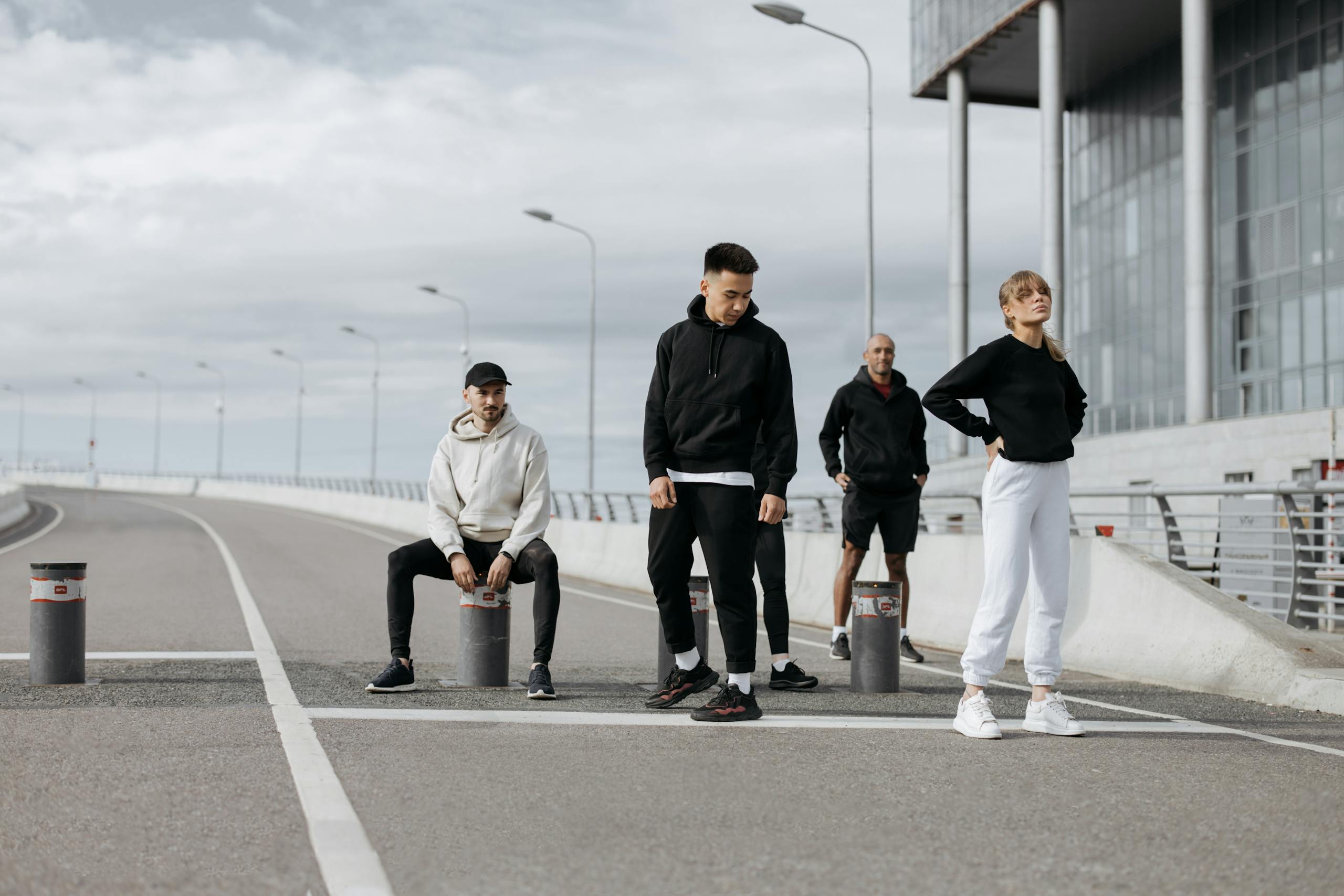Streetwear Fashion: How Did It Become a Global Phenomenon? 🧢🔥
Streetwear fashion isn’t just about hoodies and sneakers—it’s a lifestyle, a cultural expression, and for many, a powerful identity. What began in the surf and skate scenes of 1980s California has exploded into a global movement embraced by fashion giants, celebrities, and everyday youth alike.
Today, you can walk into a luxury boutique in Paris, a vintage market in Tokyo, or a street in Cairo and spot someone rocking streetwear. So how did this niche style become a worldwide trend? The answer lies in a mix of rebellion, pop culture, music, and social media influence that reshaped what it means to be fashionable.
In this blog, we’ll trace the roots of streetwear, explore its evolution across continents, and understand what makes it one of the most powerful fashion revolutions of the 21st century. Whether you’re a hypebeast, a sneakerhead, or someone curious about why everyone is suddenly wearing oversized tees and cargo pants—this post will break it all down for you. 🧢🔥
1. The Origins of Streetwear Culture
Streetwear’s early roots can be traced back to the 1980s and early 1990s in California. Inspired by the surf, skate, and punk scenes, brands like Stüssy emerged with bold graphics, relaxed silhouettes, and a do-it-yourself spirit. The founders didn’t intend to start a fashion revolution—they just printed a few cool T-shirts and sold them out of their cars or local surf shops.
It wasn’t long before streetwear began merging with hip-hop culture, especially in cities like New York. As rap music gained popularity, artists started repping streetwear brands, turning local labels into global dreams. The streets dictated the trends—not the runway. That rebellious, grassroots energy would define the aesthetic for decades to come.
2. The Role of Music and Pop Culture
Streetwear owes much of its rise to music—especially hip-hop. Icons like Run DMC, Tupac, and later Kanye West and Travis Scott, helped propel brands like Adidas, Supreme, and A Bathing Ape into the mainstream. When fans saw their favorite artists in streetwear, it wasn’t just fashion—it was culture.
Today, collaborations between streetwear labels and musicians are the norm. Just look at Travis Scott’s partnership with Nike or Pharrell’s with Adidas. These collabs blur the lines between music, lifestyle, and street fashion, keeping the genre fresh and influential.
Even K-pop stars have embraced the movement. Brands like Off-White and BAPE now have global reach thanks to Asian artists repping them in music videos and live performances.
3. Hype Culture and the Power of Exclusivity
One of the key drivers behind the global obsession with streetwear is hype culture. Limited drops, long lines, and resale markets have made streetwear almost addictive. Supreme is perhaps the best-known example, turning weekly product “drops” into must-attend virtual events.
This sense of scarcity and community fuels desire. Buying a hoodie isn’t just about clothing—it’s about being part of a tribe. The hype also creates value. A T-shirt bought for $50 might resell for $500, thanks to limited supply and high demand.
Streetwear has become the stock market of fashion—and people love it. Even tech-savvy entrepreneurs have jumped into the game, automating purchases and launching platforms like StockX and Graffitishop.
4. Social Media’s Role in Going Global
Streetwear would not be a global phenomenon without Instagram, TikTok, and YouTube. Influencers and content creators showcase their fits daily, tagging brands and sharing styling tips. This virality turns local brands into global icons overnight.
Platforms like TikTok and SeifWear’s TikTok have made it easier than ever to discover new trends, especially from Gen Z creators blending streetwear with vintage or cultural aesthetics.
Social media also democratized fashion. You no longer need to be in New York or Tokyo to be part of the movement. A kid in Nairobi or Alexandria can create content, grow a following, and influence global fashion trends—all from their smartphone.
5. Streetwear in Egypt and the Middle East
Streetwear isn’t just a Western trend anymore. In places like Egypt, Saudi Arabia, and the UAE, local designers are fusing streetwear with cultural elements, creating something entirely new. Think oversized abayas, kufi-inspired caps, and Arabic calligraphy on T-shirts.
Brands like SeifWear are leading the charge by blending Arabic identity with global street style. Their pieces resonate deeply with youth who want to look stylish while staying connected to their roots.
Want to join the Arabic-speaking streetwear community? Click here to join our WhatsApp group and get the latest drops, styling tips, and events.
6. From Niche to Mainstream
Luxury fashion once looked down on streetwear, but today, brands like Louis Vuitton, Dior, and Gucci have all jumped on the wave. Collaborations between streetwear legends and haute couture designers are now common. Remember when Virgil Abloh became the artistic director at Louis Vuitton? That was a major milestone.
This crossover turned streetwear into high fashion, seen on runways, red carpets, and in editorial spreads. But even with all the glamor, the core values of streetwear remain—authenticity, rebellion, and expression.
7. What’s Next for Streetwear?
The future of streetwear lies in sustainability, tech, and cultural fusion. Eco-conscious brands are rising, using organic materials and ethical production. Smart wearables may enter the scene too—imagine hoodies that change color based on temperature or sneakers that charge your phone.
Meanwhile, more regions are adding their own flavor. African, Middle Eastern, and South American designers are redefining streetwear for the next generation. It’s no longer about copying Western styles—it’s about remixing them.
Conclusion
Streetwear has evolved far beyond its humble roots in skate parks and recording studios. It has become a global fashion language that speaks to authenticity, culture, and innovation. From Cairo to Tokyo, streetwear tells stories of rebellion, creativity, and identity. As long as youth seek ways to express themselves boldly and authentically, streetwear will continue to thrive. Stay fresh, stay original—and if you haven’t already, join the community and be part of the movement. 🖤


